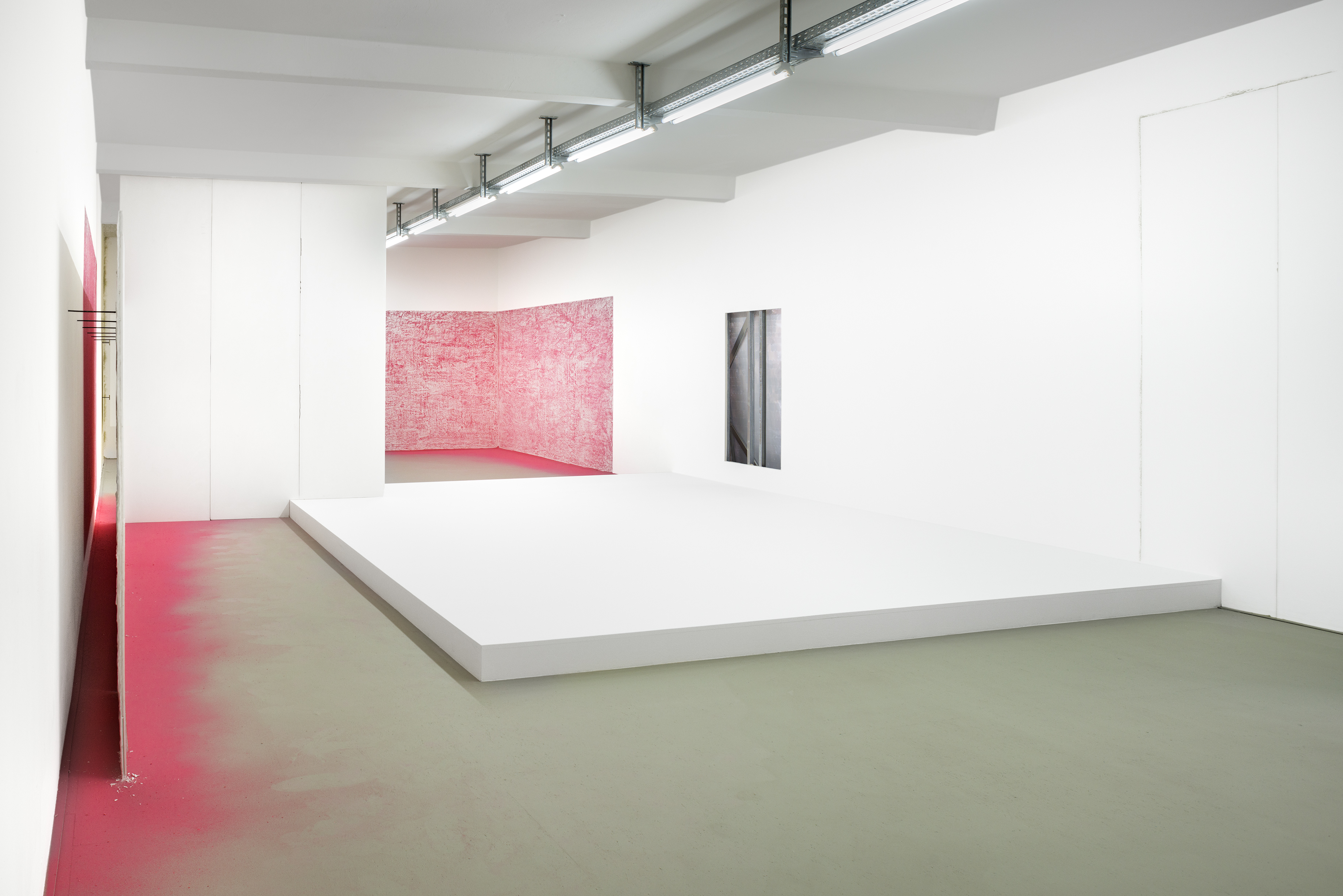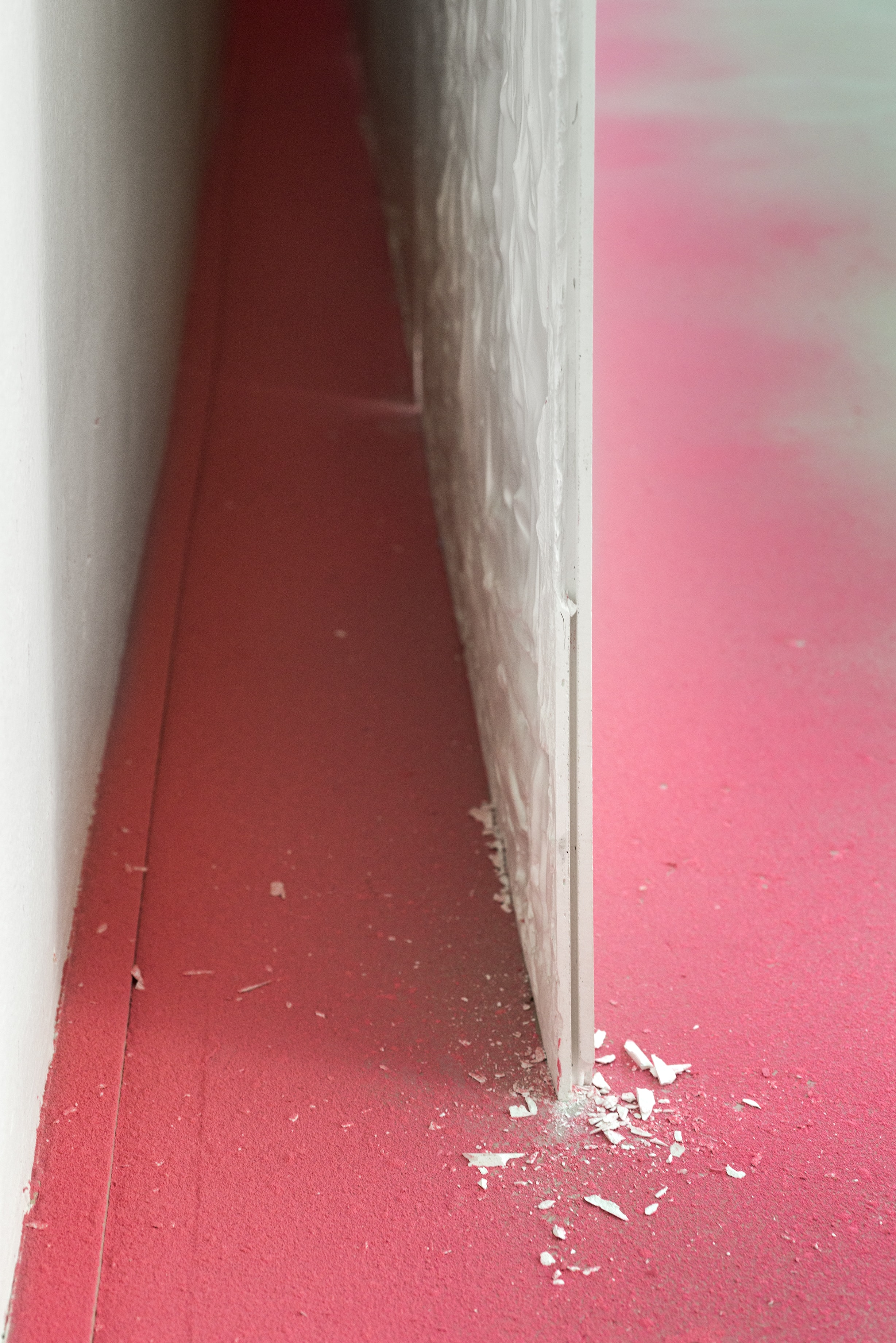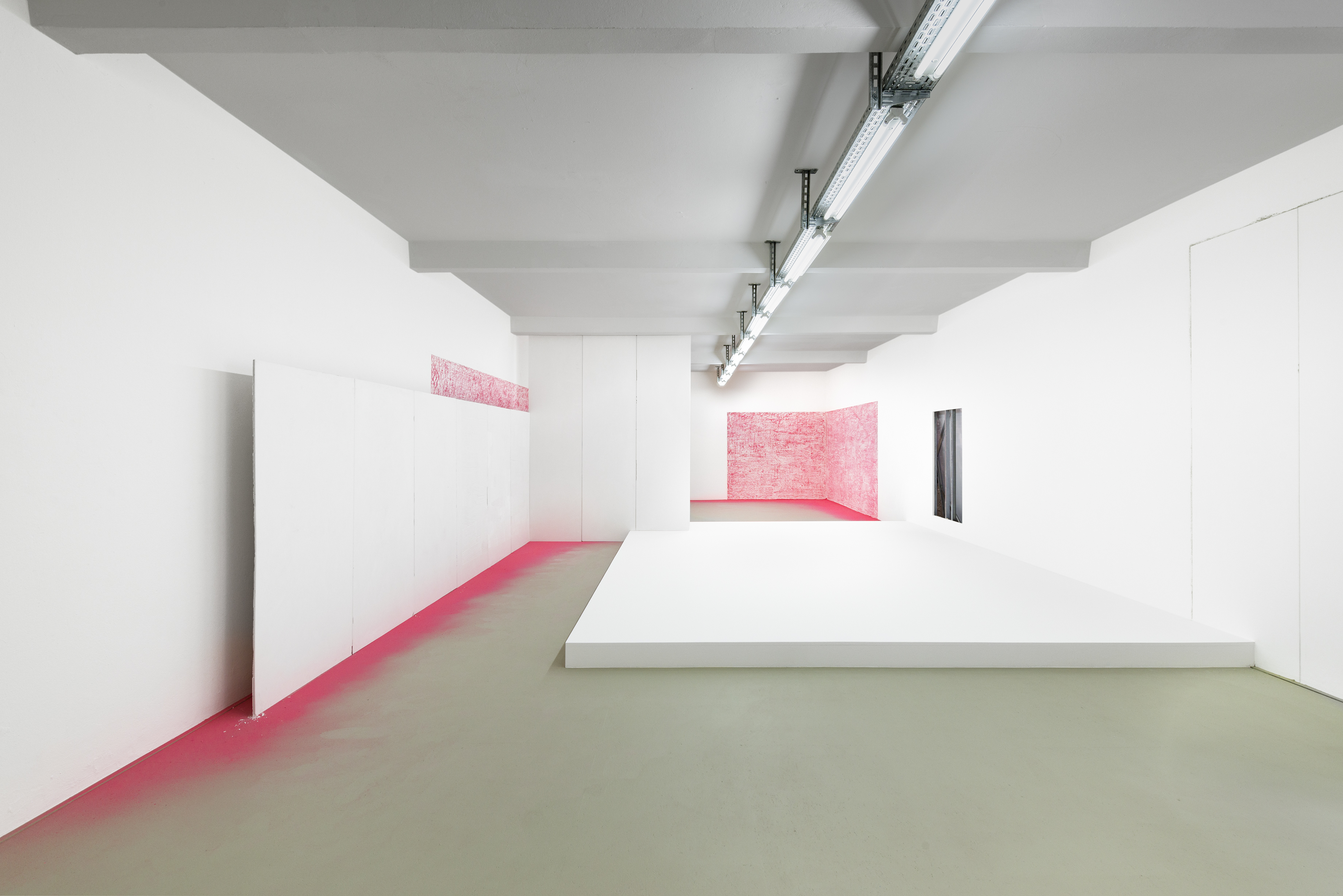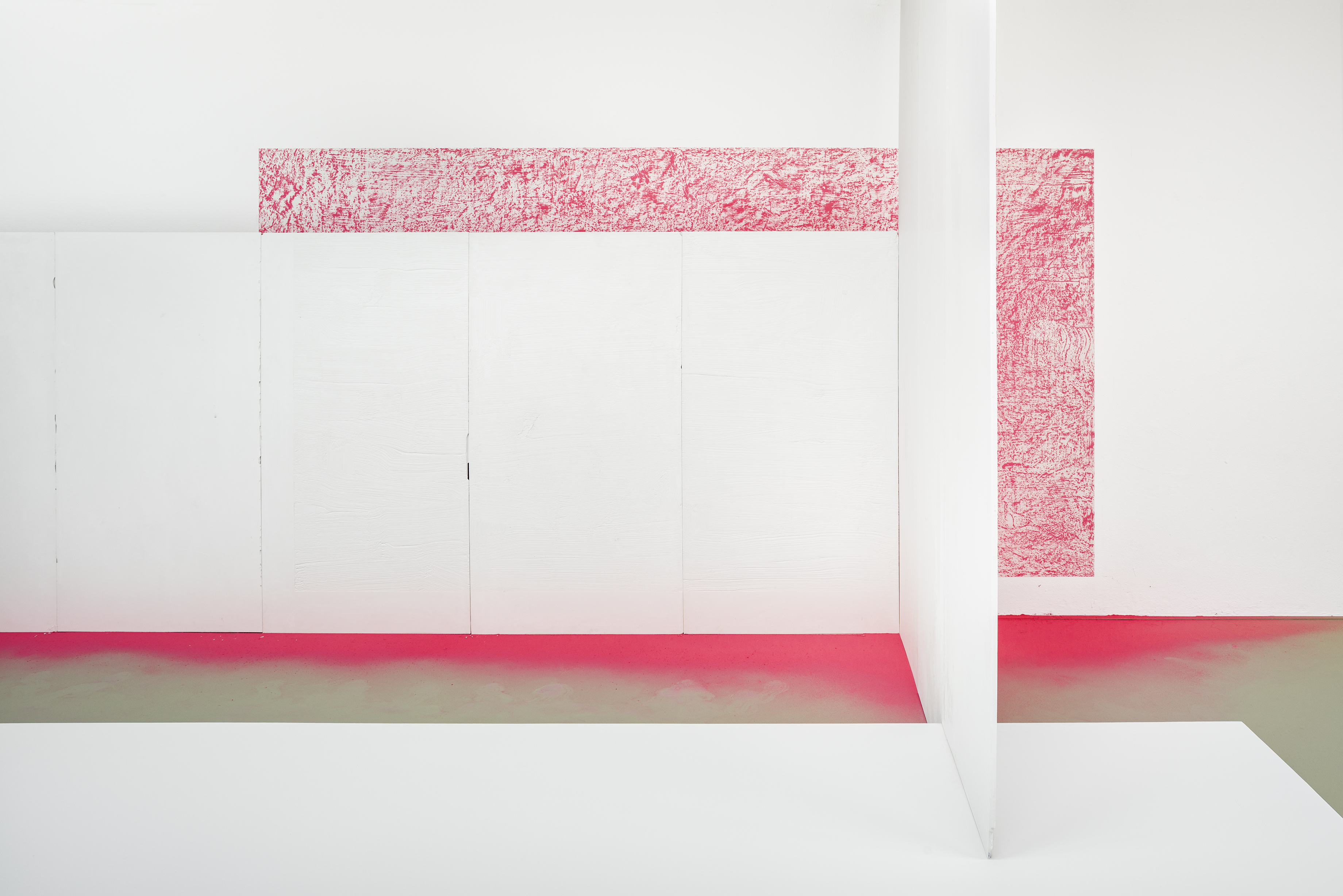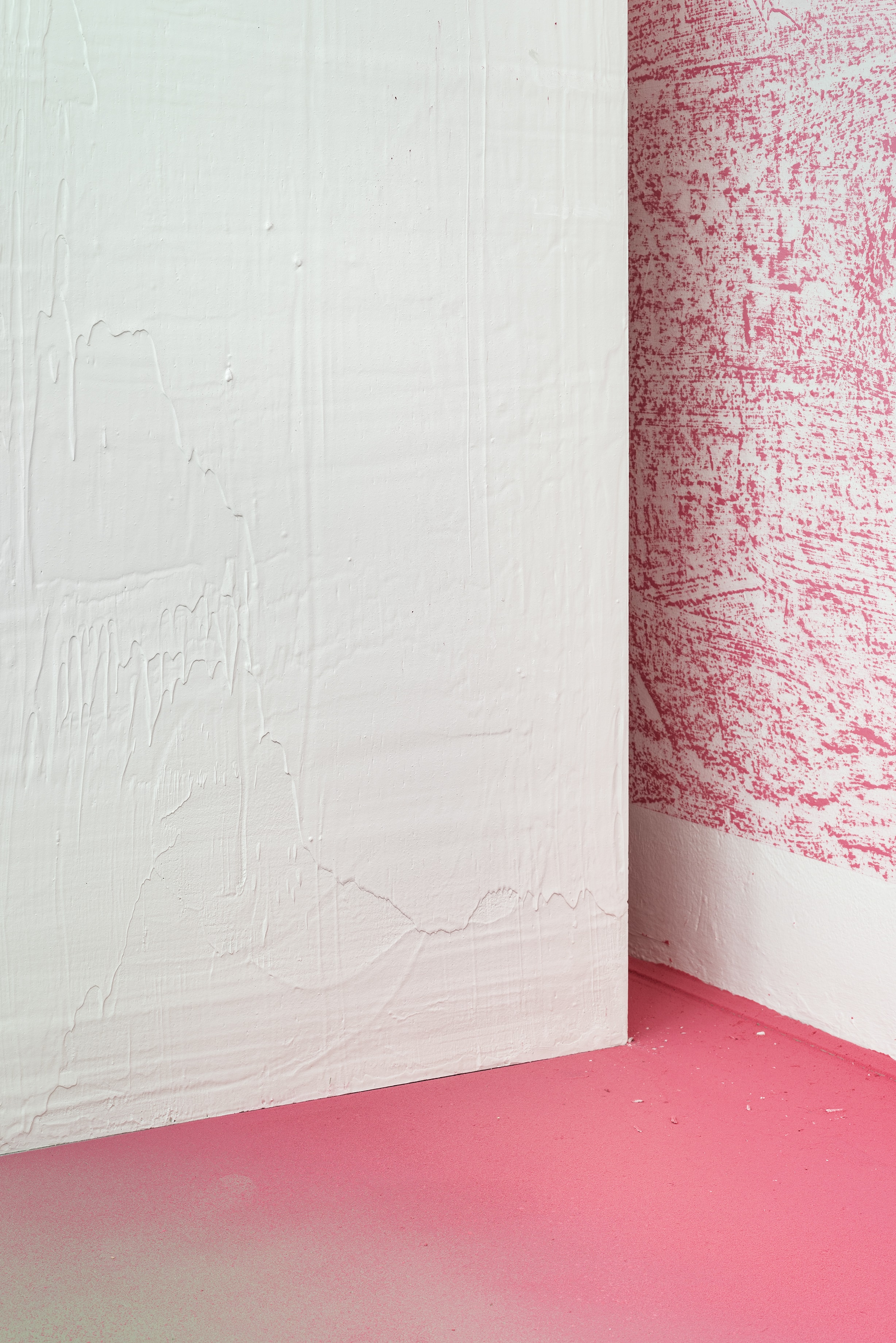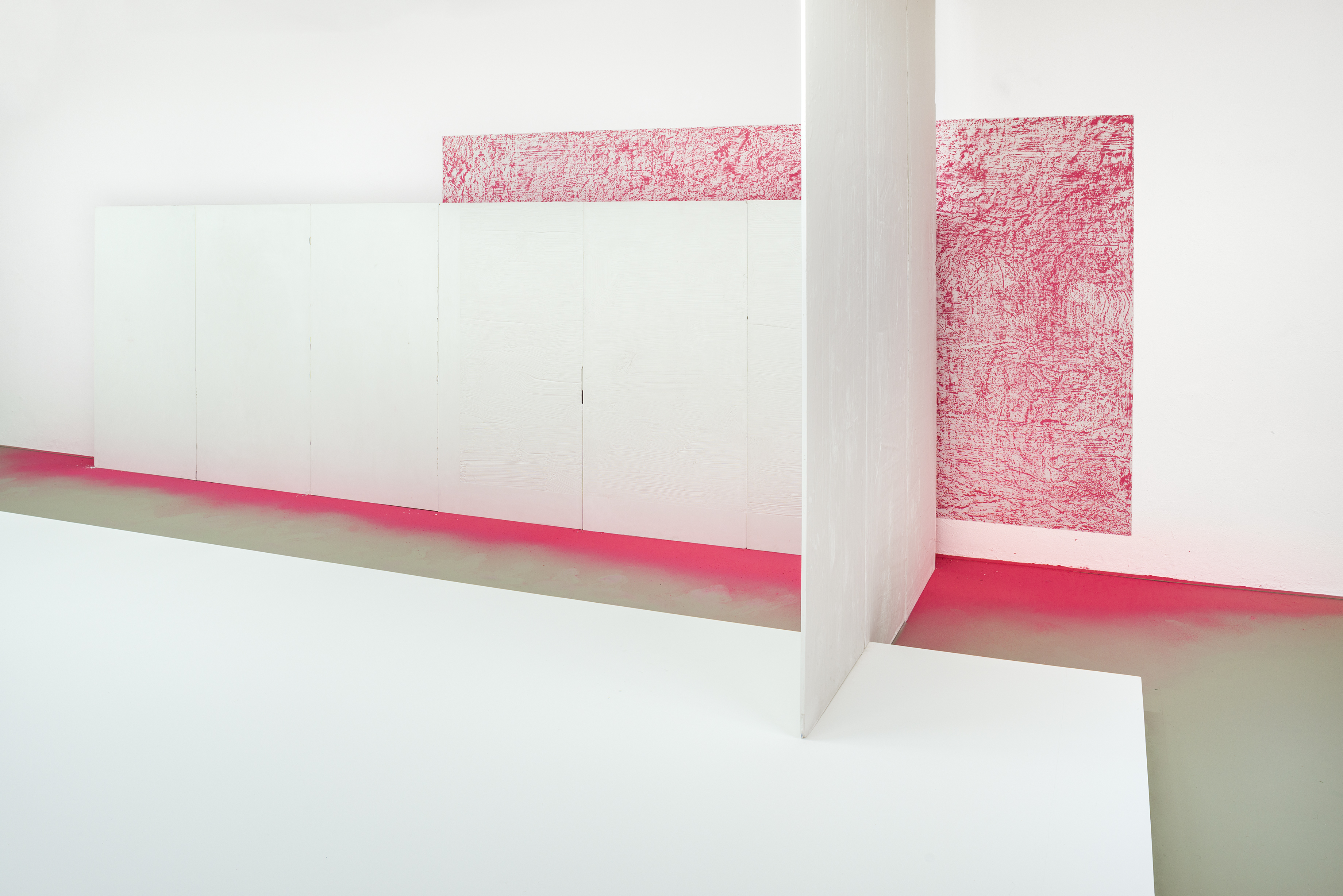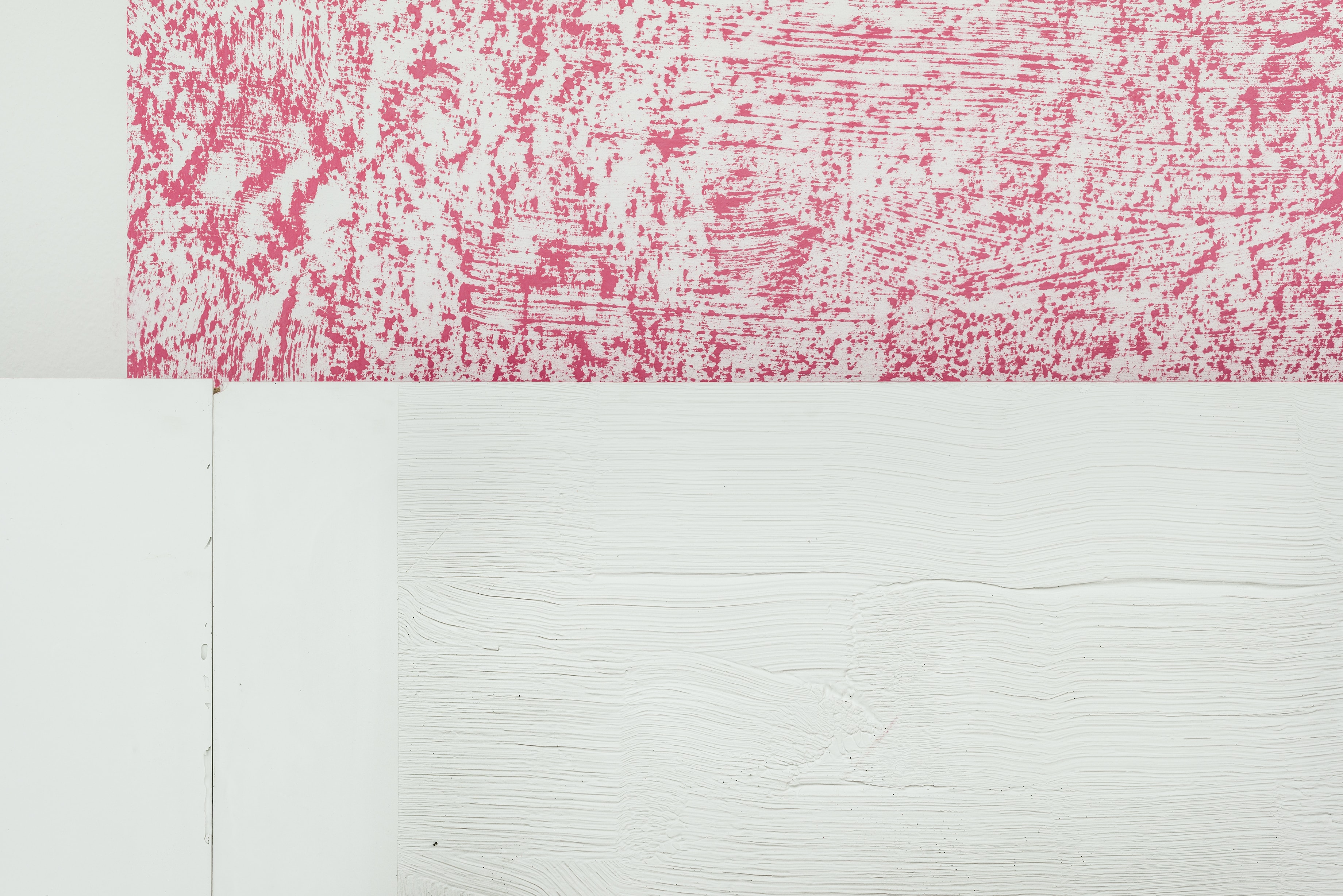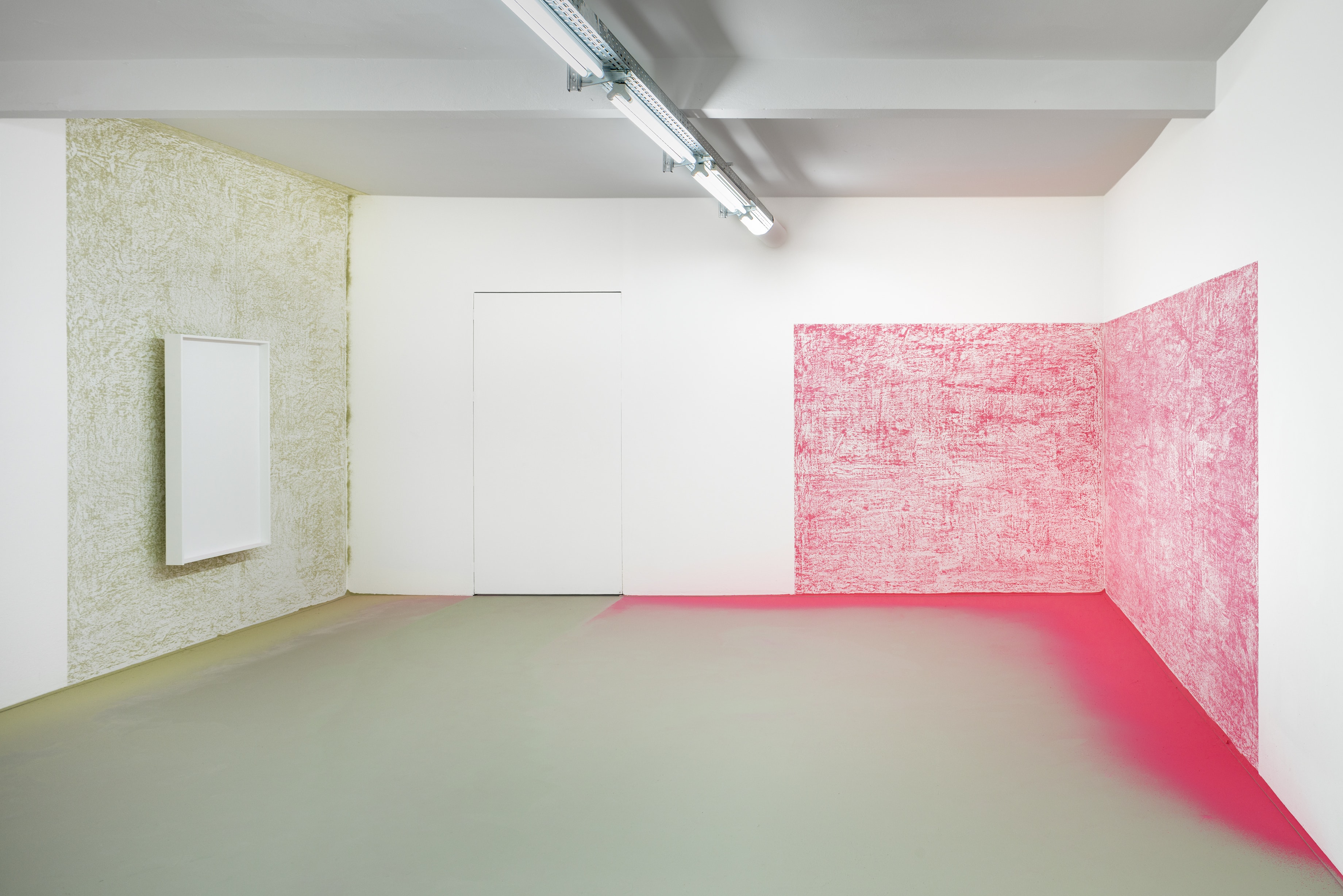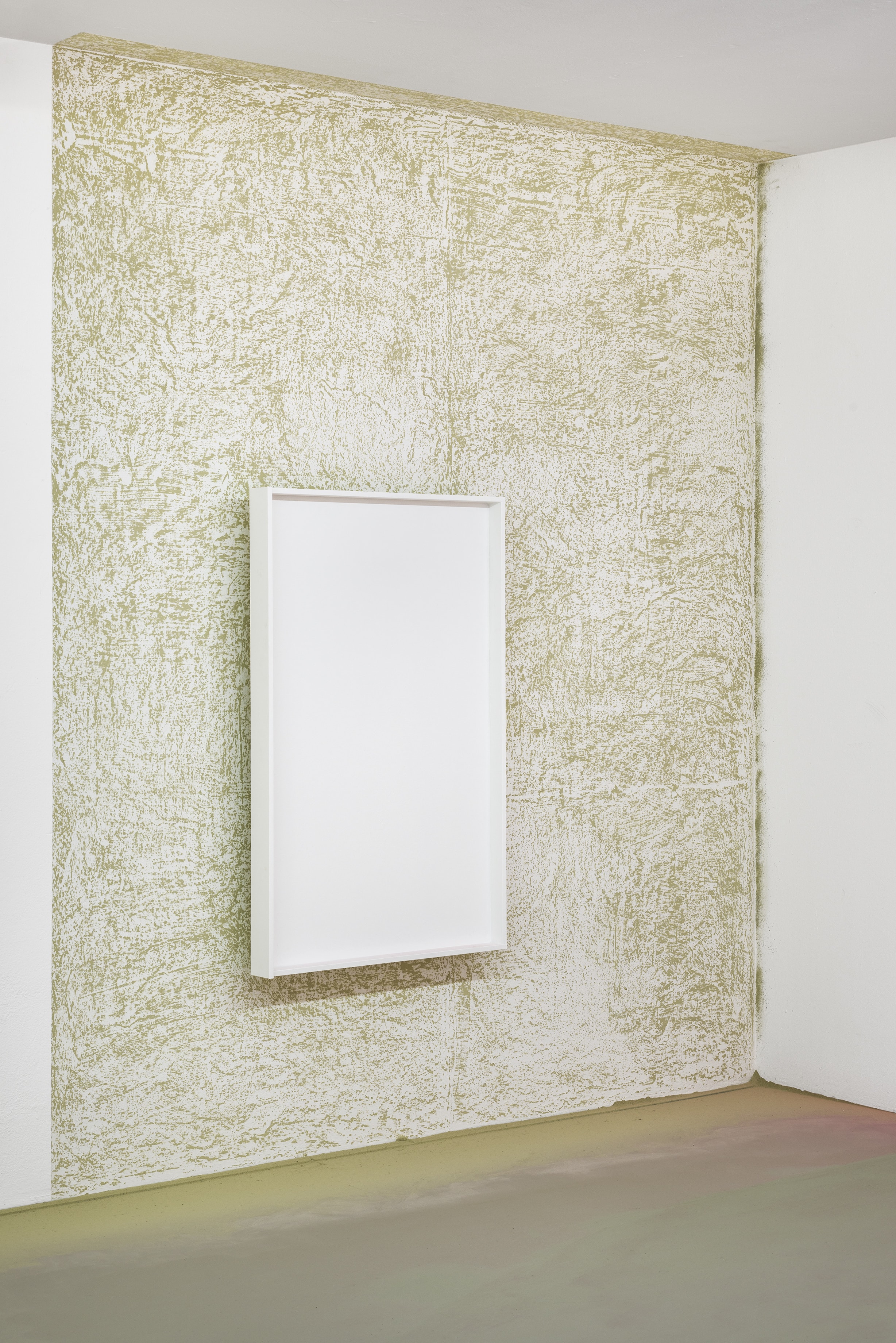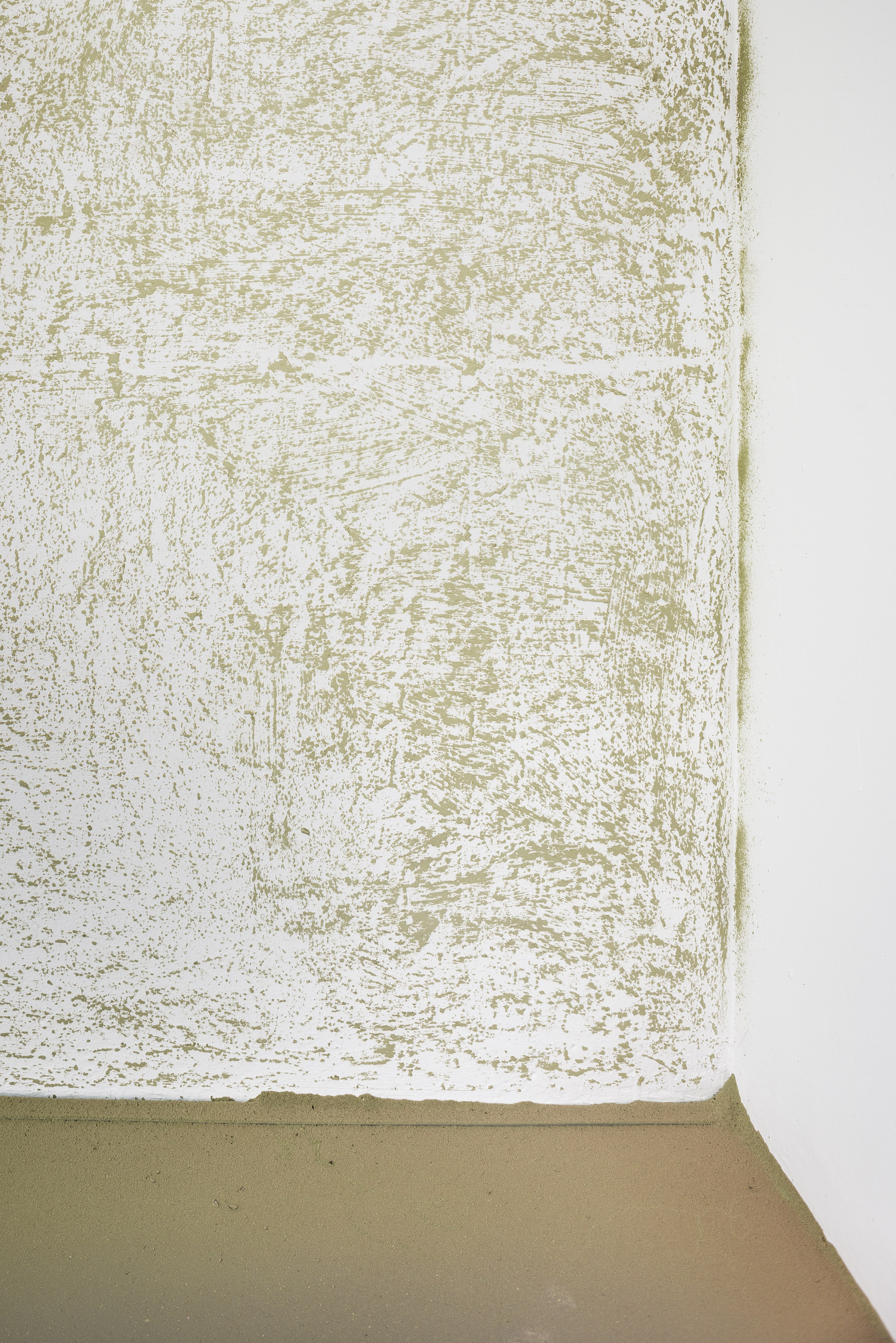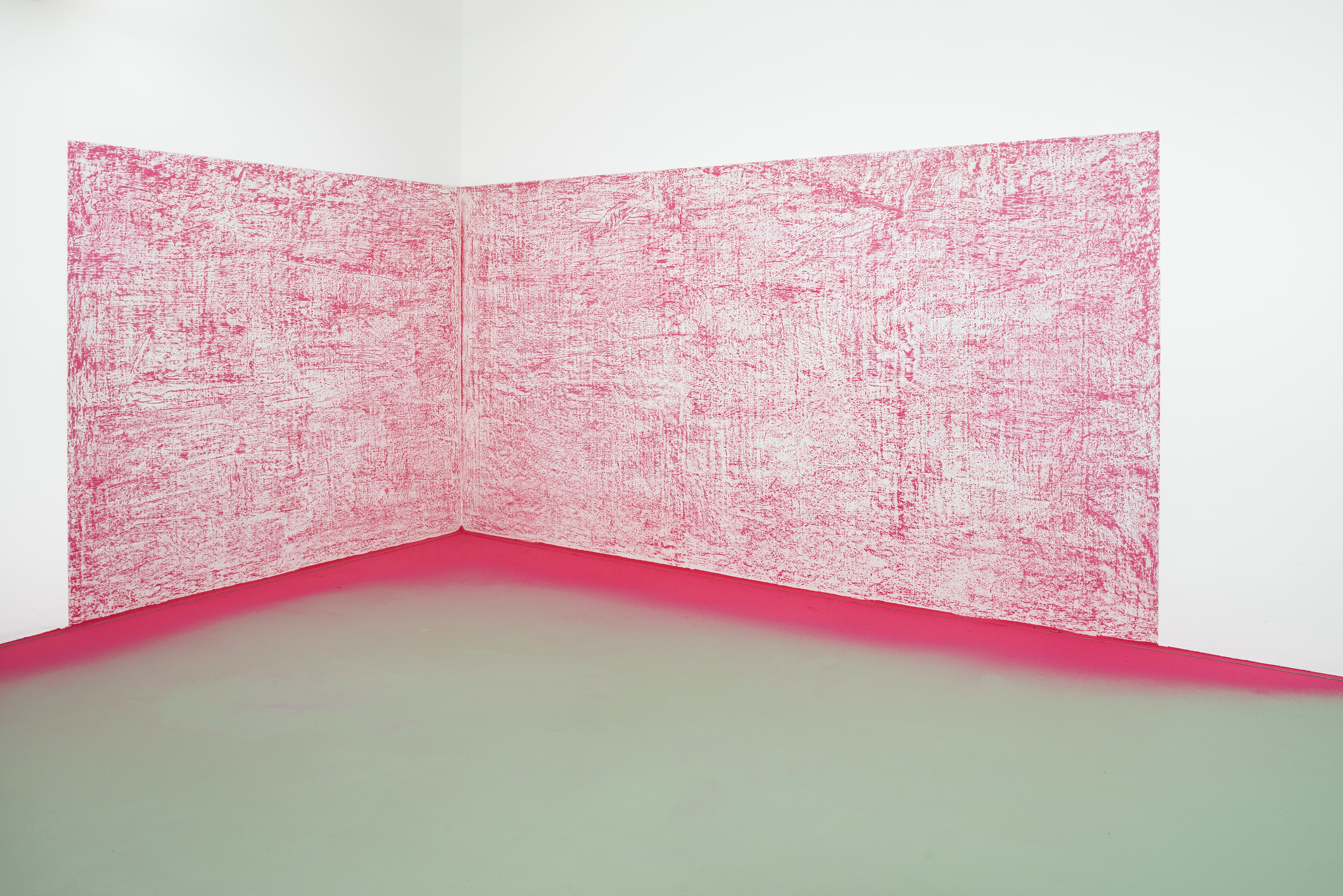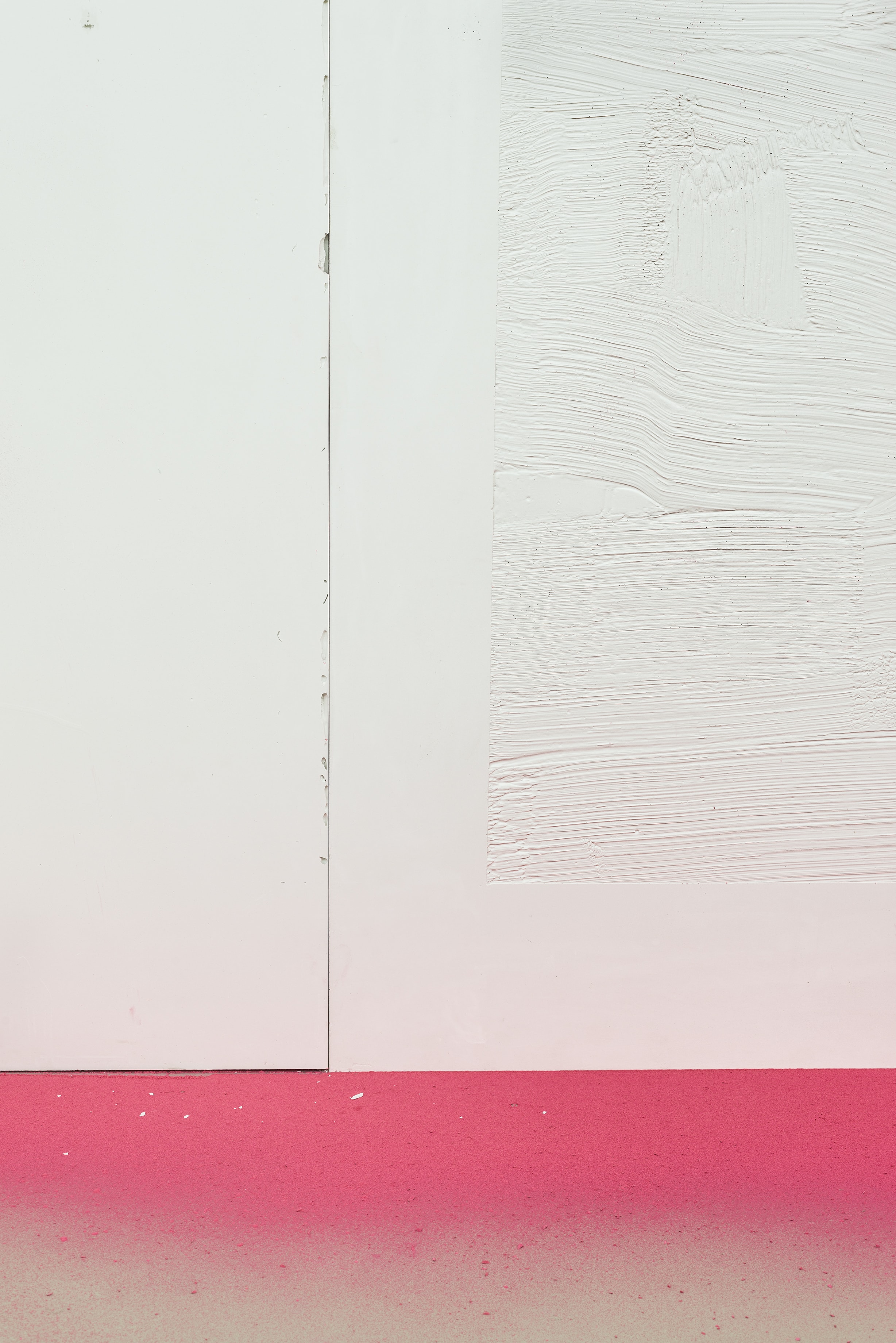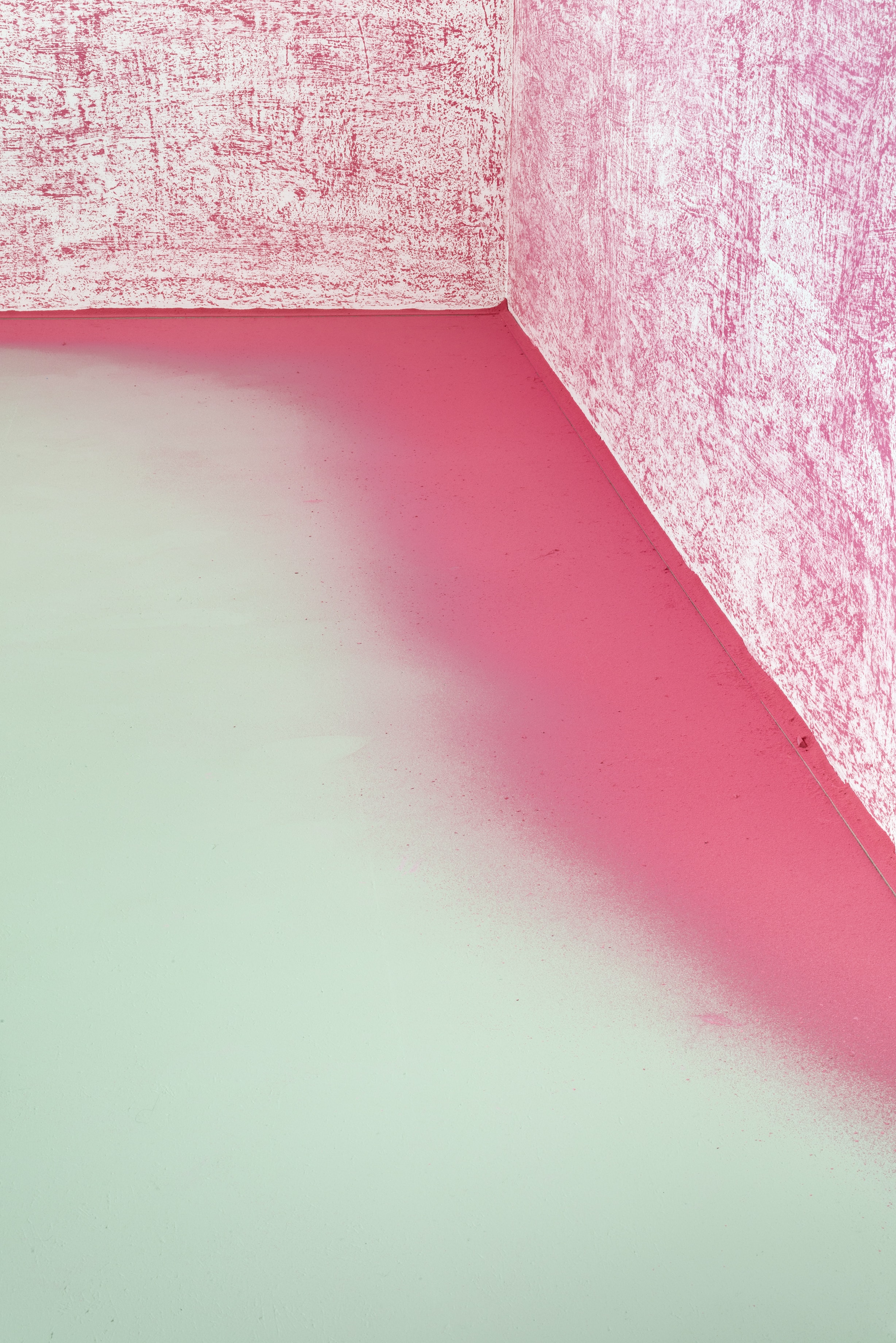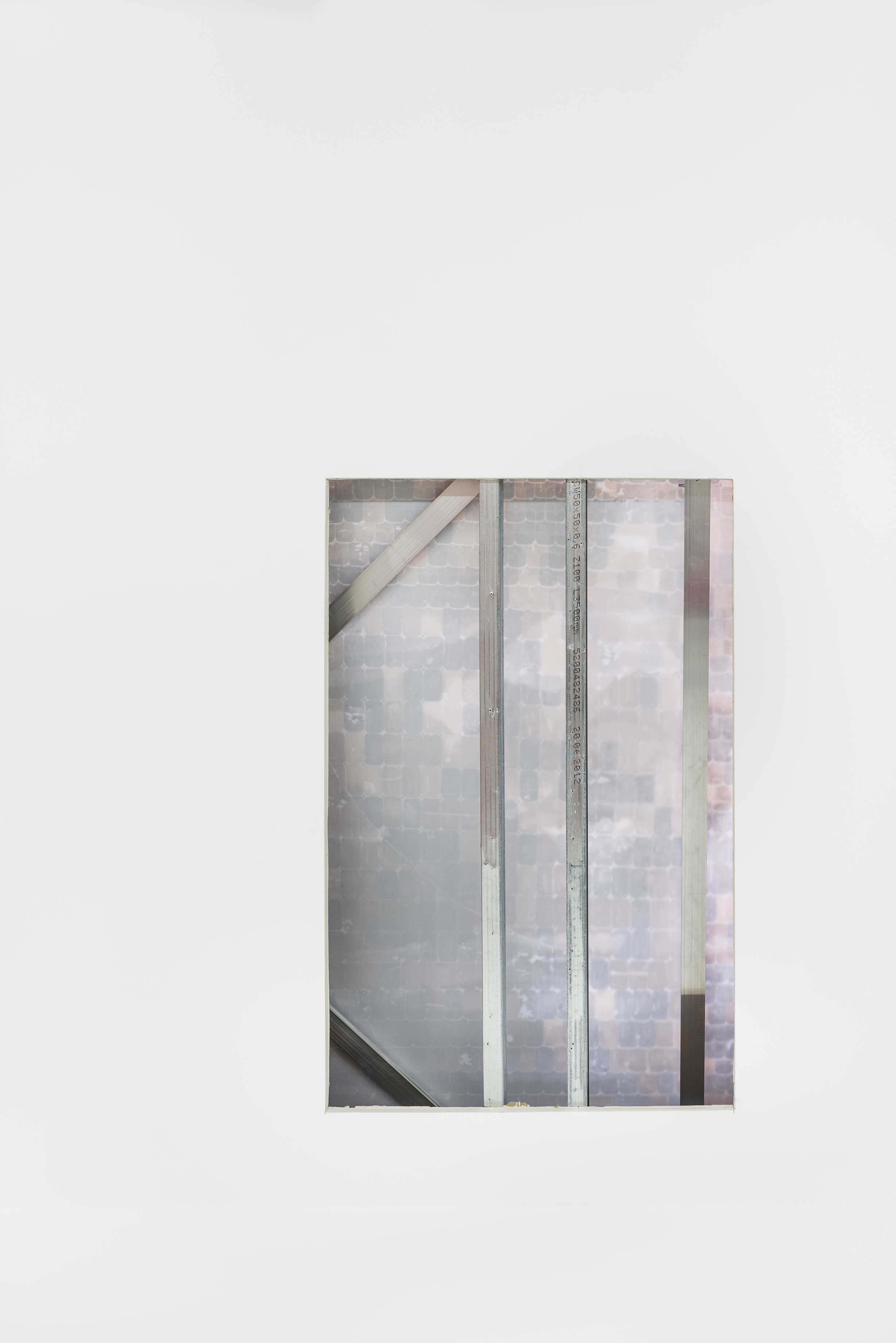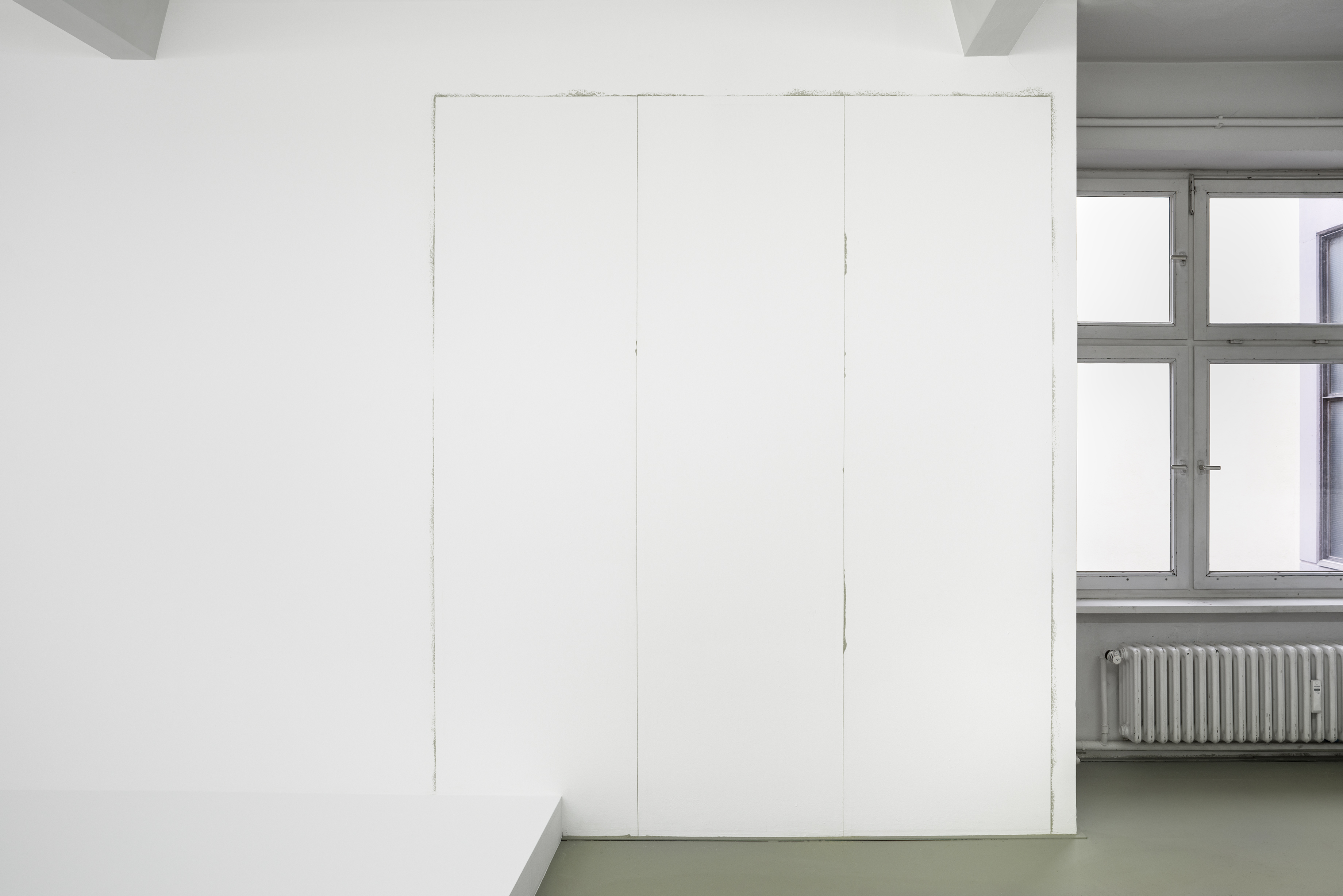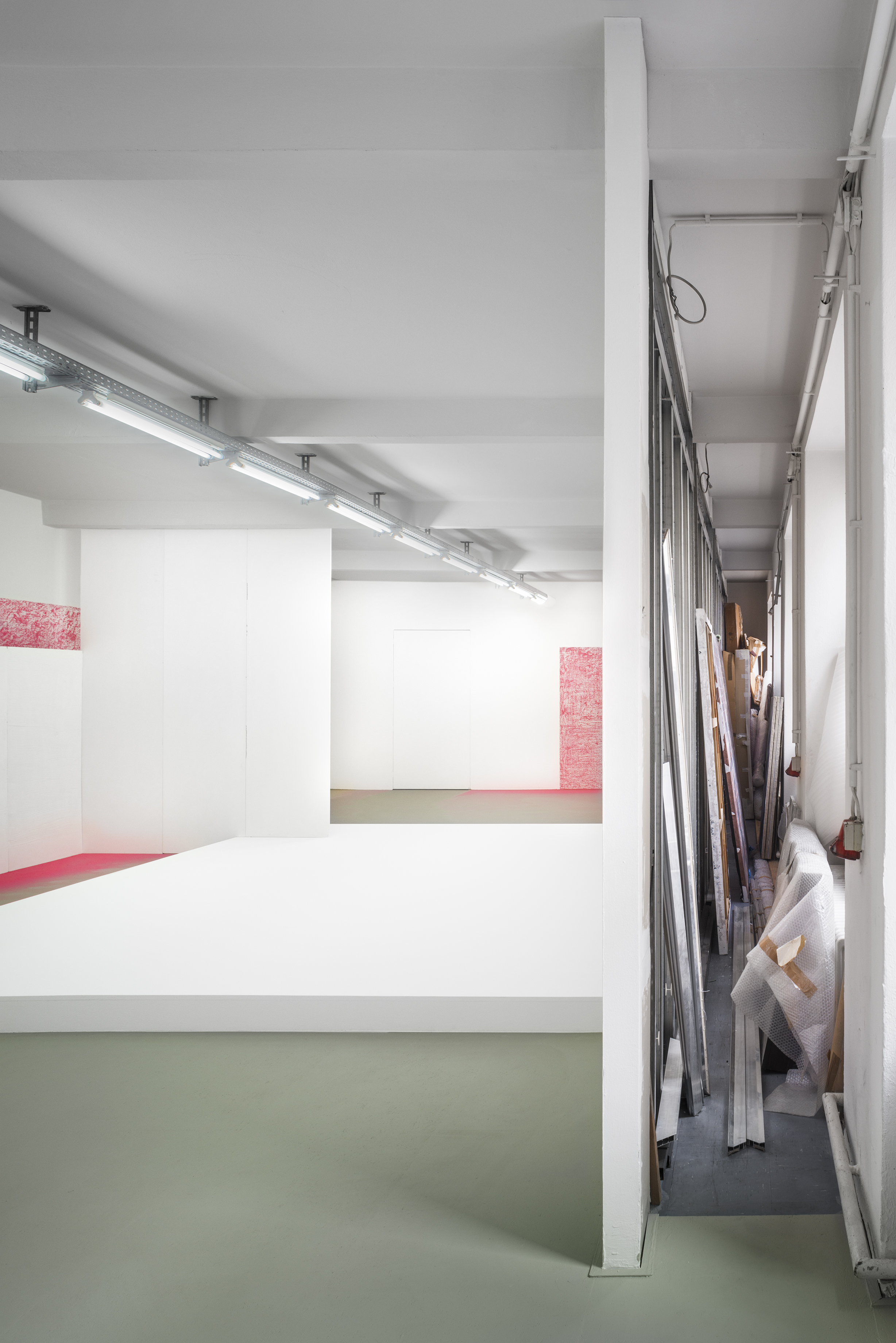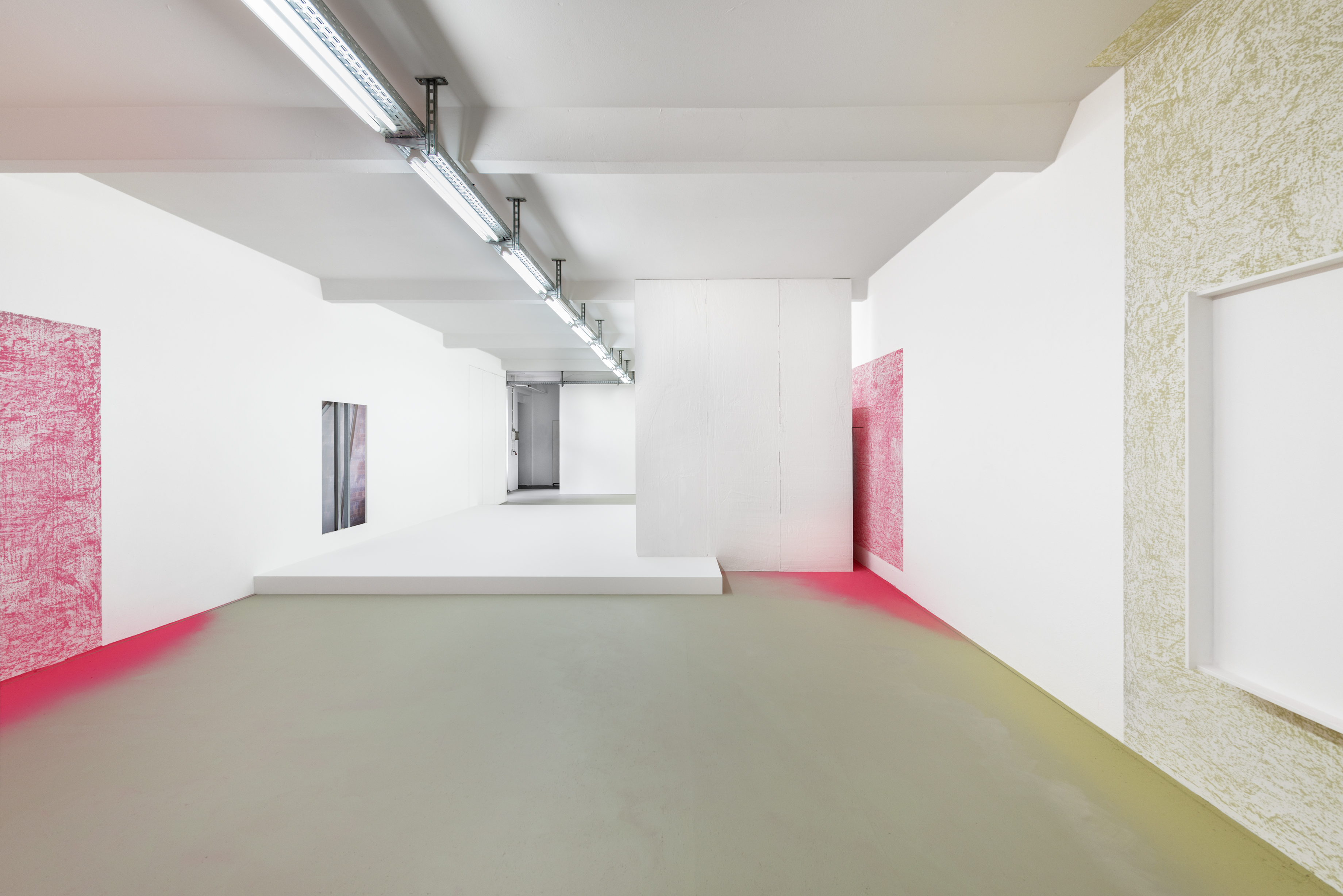MAXIMILIAM ARNOLD
IMAGES
INFO
Stop telling me painting is dead. It’s alive and well, in case you were wondering. Or at least Maximilian Arnold’s painting is, if you look at *a deep scrub*, his second solo show at DUVE Berlin. I mean not “alive and well” like you’d say with bitterness about some ancient wealthy aunt who refuses to die and is gonna bequeath everything she owns to her evil, equally ancient Persian cat anyway . In this case, “alive and well” would rather imply the state in which a member of the X-Men would find themselves after the classical, Hollywoodian crescendo: from doubt through crisis and confrontation with oneself to a superior state beyond the usual struggles. Arnold’s painting is basically Jean Grey, before she turned into a destructive entity with the eyes of a raven and the temper of an Italian tourist discovering his hotel bathroom doesn't have a bidet.
That’s a lot of comparisons and metaphors of course, which are only here because in fact, it’s a bit tricky to explain you’re basically standing in/on/within/in the middle of a painting.
Granted, statements like that can irritate. However, this particular one makes sense, as it is rooted in the artist’s deep, vast and at times confrontational questioning of image-making itself, as well as his very personal approach to deal with it.
Maximilian Arnold has always been interested in the transitive aspect of his primary medium. In times where everything has already been represented, or eventually will be (probably even more depressing of a thought, if you’re an artist at least), he aims to push through this representational dead-end - for which we can collectively blame whomever invented the internet - without cynicism or rudeness. In order to do so, he has appropriated aspects of contemporary image-perception and image-making, which, as the phone in your pocket might inform you of, is predominantly done through screens. Extreme flatness is one aspect of it, and probably the most dominant one; blurs and glitches another.
So far Arnold has translated this mostly onto canvases, using demanding processes that include many pieces of fabric he arranges into intricate abstractions, a lot of patience, much thinking, more fabric and some toxic lacquer usually used to paint airplanes. It would be a bit daring to claim that the combination of such utterly manual processes with results that resemble imperfect digital prints bear the potential to reconcile the analog with the digital; but for sure, his practice brings their trajectories to a fascinating proximity.
With *a deep scrub*, partly realised in collaboration with Tilman Glatz, this reconciliatory strategy is expanded into a third dimension. The exhibition works as an increase of vocabulary and at the same time, tightens the screws holding together the essential interrogations surrounding the Image: how do you make, define and perceive one? For Arnold, the next step in the quest to resolve these questions demands materiality and sensuality. With a series of gestures, the artist scrubs off the surface of some of art’s most exhausting and exhausted terminologies, revealing fresh skin and allowing for a more generous, yet concise understanding of his practice.
Using plaster partitions and platforms, he modifies the space, blurring the lines between white cube (ugh) and sculpture (eye-roll). These elements create dark corners and obstructions, automatically pushing the viewer to take a certain way through the gallery: the work therefore guides the visitor. Rectangular surfaces behind the walls are covered in chalk, one of them the same size and placement as one of the artist’s works in his previous show at the gallery, *Reasonable Doubt* (2015). Here the material (come on) operates as colour (enough already) in its pure form - however, its failure to uniformly cover the gallery’s walls and the dust it produces charge it with qualities both humane and ghostly. The intrusive elements stacked in the middle of the space counteract with what might be the least obvious, but the most interesting link between Arnold’s canvases and this translation into three-dimensionality: a corrupted form of void.
In fact, a decisive part of the artist’s work on textile is the moment he spreads an untouched layer of polyester onto the aforementioned arrangement of cut-out fabric pieces and passes the lacquer-covered brush onto it. Then the pigments from the bottom layer are sucked into the top layer, creating a flawed print of the original structure, and hundreds of now colourless bits of fabric are discarded. To some extent the void in *a deep scrub* revives these bits of nothingness, so indispensable and then suddenly so useless; it also empowers what were blemishes and imperfections on the canvases to metamorphose into volumes of “empty” space, both within the structures built by Arnold and the gallery space itself.
Hence, the exhibition is as much about revealing as it is about transmuting. That’s the state Arnold’s painterly practice is currently in: there’s a vivid longing for what’s in store next; at the same time it’s informed by a sharp respect of the complex set of rules that has defined it until now. Luckily and only thanks to this consciousness, Arnold can allow it to transcend dimensions and peek into alternative options. That’s probably even cooler than what Jean Grey does, actually.
(PS: if you don’t know about Jean Grey or the X-Men, there are thousands of pirated versions of the movies online for you to watch, as well as comic books and a cheesy but entertaining cartoon series.)
Text by Karim Crippa
I try to pin down a couple of elements that makes this artist who he is, but it’s hard to separate the work from the artist. Especially when it comes to a person who practically never stops working. Sometimes it’s easier to explain than to understand.
He stands up for what he thinks is true and he sticks to it. At the same time as he scrubs and cleans he hides and covers. Minimax, his name in itself a contradiction. With galaxies of paint he depicts worldly elements and makes us see them all so precious. I’ve stood there, in front of his work, confronted by the omnipresence of certain things that are everywhere and nowhere to be found.
He has that third eye for detail, is one of those sees-behind-the-skin-type of guy that makes him as annoying as he is right about most things. I see his work as deliciously queerish with a musky air of masculinity around it that makes me wanna become best friends with it at the same time I wanna hump it. Looking at him in his studio I get the feeling that he’s flammable.
“These paintings are driving me crazy!”
No Max, you’re driving us crazy. Screaming while gently stroking the unwanted wrinkles in the canvas he is the epitome of that gap we all experience in our personalities between a need of tidiness and high security and the need for going berserk in all ways possible. For a long time art tried to invent an explanation for the world, how things work, now we’re trying to invent ourselves. That’s why he makes his bastard paintings into listeners. They are made for you to tell them something about yourself rather than to present their selves. He knows exactly what he’s doing, the question is; do we?
Text by Nicolina Eklund
That’s a lot of comparisons and metaphors of course, which are only here because in fact, it’s a bit tricky to explain you’re basically standing in/on/within/in the middle of a painting.
Granted, statements like that can irritate. However, this particular one makes sense, as it is rooted in the artist’s deep, vast and at times confrontational questioning of image-making itself, as well as his very personal approach to deal with it.
Maximilian Arnold has always been interested in the transitive aspect of his primary medium. In times where everything has already been represented, or eventually will be (probably even more depressing of a thought, if you’re an artist at least), he aims to push through this representational dead-end - for which we can collectively blame whomever invented the internet - without cynicism or rudeness. In order to do so, he has appropriated aspects of contemporary image-perception and image-making, which, as the phone in your pocket might inform you of, is predominantly done through screens. Extreme flatness is one aspect of it, and probably the most dominant one; blurs and glitches another.
So far Arnold has translated this mostly onto canvases, using demanding processes that include many pieces of fabric he arranges into intricate abstractions, a lot of patience, much thinking, more fabric and some toxic lacquer usually used to paint airplanes. It would be a bit daring to claim that the combination of such utterly manual processes with results that resemble imperfect digital prints bear the potential to reconcile the analog with the digital; but for sure, his practice brings their trajectories to a fascinating proximity.
With *a deep scrub*, partly realised in collaboration with Tilman Glatz, this reconciliatory strategy is expanded into a third dimension. The exhibition works as an increase of vocabulary and at the same time, tightens the screws holding together the essential interrogations surrounding the Image: how do you make, define and perceive one? For Arnold, the next step in the quest to resolve these questions demands materiality and sensuality. With a series of gestures, the artist scrubs off the surface of some of art’s most exhausting and exhausted terminologies, revealing fresh skin and allowing for a more generous, yet concise understanding of his practice.
Using plaster partitions and platforms, he modifies the space, blurring the lines between white cube (ugh) and sculpture (eye-roll). These elements create dark corners and obstructions, automatically pushing the viewer to take a certain way through the gallery: the work therefore guides the visitor. Rectangular surfaces behind the walls are covered in chalk, one of them the same size and placement as one of the artist’s works in his previous show at the gallery, *Reasonable Doubt* (2015). Here the material (come on) operates as colour (enough already) in its pure form - however, its failure to uniformly cover the gallery’s walls and the dust it produces charge it with qualities both humane and ghostly. The intrusive elements stacked in the middle of the space counteract with what might be the least obvious, but the most interesting link between Arnold’s canvases and this translation into three-dimensionality: a corrupted form of void.
In fact, a decisive part of the artist’s work on textile is the moment he spreads an untouched layer of polyester onto the aforementioned arrangement of cut-out fabric pieces and passes the lacquer-covered brush onto it. Then the pigments from the bottom layer are sucked into the top layer, creating a flawed print of the original structure, and hundreds of now colourless bits of fabric are discarded. To some extent the void in *a deep scrub* revives these bits of nothingness, so indispensable and then suddenly so useless; it also empowers what were blemishes and imperfections on the canvases to metamorphose into volumes of “empty” space, both within the structures built by Arnold and the gallery space itself.
Hence, the exhibition is as much about revealing as it is about transmuting. That’s the state Arnold’s painterly practice is currently in: there’s a vivid longing for what’s in store next; at the same time it’s informed by a sharp respect of the complex set of rules that has defined it until now. Luckily and only thanks to this consciousness, Arnold can allow it to transcend dimensions and peek into alternative options. That’s probably even cooler than what Jean Grey does, actually.
(PS: if you don’t know about Jean Grey or the X-Men, there are thousands of pirated versions of the movies online for you to watch, as well as comic books and a cheesy but entertaining cartoon series.)
Text by Karim Crippa
I try to pin down a couple of elements that makes this artist who he is, but it’s hard to separate the work from the artist. Especially when it comes to a person who practically never stops working. Sometimes it’s easier to explain than to understand.
He stands up for what he thinks is true and he sticks to it. At the same time as he scrubs and cleans he hides and covers. Minimax, his name in itself a contradiction. With galaxies of paint he depicts worldly elements and makes us see them all so precious. I’ve stood there, in front of his work, confronted by the omnipresence of certain things that are everywhere and nowhere to be found.
He has that third eye for detail, is one of those sees-behind-the-skin-type of guy that makes him as annoying as he is right about most things. I see his work as deliciously queerish with a musky air of masculinity around it that makes me wanna become best friends with it at the same time I wanna hump it. Looking at him in his studio I get the feeling that he’s flammable.
“These paintings are driving me crazy!”
No Max, you’re driving us crazy. Screaming while gently stroking the unwanted wrinkles in the canvas he is the epitome of that gap we all experience in our personalities between a need of tidiness and high security and the need for going berserk in all ways possible. For a long time art tried to invent an explanation for the world, how things work, now we’re trying to invent ourselves. That’s why he makes his bastard paintings into listeners. They are made for you to tell them something about yourself rather than to present their selves. He knows exactly what he’s doing, the question is; do we?
Text by Nicolina Eklund
Maximillian Arnold was born in 1987 in Heidelberg, DE. He lives and works in Frankfurt am Main, DE. He attended AdBK Karlsruhe with Prof. Toon Verhoef, 2009-2013; Städelschule Frankfurt am Main with Prof. Willem de Rooij, 2013-2015.
Previous solo and two-person shows include: Zona Maco, Mexico City (MX), with Iris Touliatou; Aware Of Being Naive, Basis Showroom, Frankfurt am Main, DE, with Martin Kähler, 2016; Reasonable Doubt, DUVE Berlin, Berlin, DE, 2015; MiArt, Milan, IT, with Roman Liška, 2015; At The End Of Days Zombies Are Crawling Up The Walls, Im Hinterzimmer Showroom, Karlsruhe, DE, with Christian Falkner, 2014; The Show Must Go Wrong, Salon Kennedy, Frankfurt am Main, DE, 2014; Tu, Io, Noi, V8 Showroom, Karlsruhe, DE, with Henry Staschik, 2013; Cannot See Straight, Kensington Gardens Square, London, UK, by Salon Kennedy, 2012.
Selected group exhibitions include: Pressing Your Face in Wet Grass, PrivateOffspace, Frankfurt, DE; Tutti Meno Un Etto, Im Hinterzimmer Showroom, Karlsruhe, DE, 2017; Shades Of Grey, Kunstraum Riehen, Riehen, Basel, CH, 2016; Encoding the Urban, Kunsthaus Baselland, Muttenz, Basel, CH, 2016; My Third Wish Has Always Been Three More, Infinite Berlin, Berlin, DE, 2016; Von meinem IPhone gesendet, Alte Fleischmarkthalle Karlsruhe, Karlsruhe, DE, 2016; Art Cologne, Cologne, DE, 2016; The Art Of The Matter, CAM St. Louis, St. Louis, US, 2016; Parked Like Serious Oysters, MMK Frankfurt am Main, DE, 2015; If it can’t burn us, can it still warm our hearts?, Mindscape Universe Showroom, Berlin, DE, 2015; Everything Not Saved Will Be Lost, Villa Gellerstraße, Karlsruhe, DE, 2015; NADA, New York, US, 2015; Paint Me A River, Flur11 Showroom, Braunschweig, DE, 2014; Flumen, Kunsthalle Mulhouse, Mulhouse, FR, 2014.
Upcoming group exhibition: Painting Or Not, Kaviar Factory, Henningsvær, NO.
Previous solo and two-person shows include: Zona Maco, Mexico City (MX), with Iris Touliatou; Aware Of Being Naive, Basis Showroom, Frankfurt am Main, DE, with Martin Kähler, 2016; Reasonable Doubt, DUVE Berlin, Berlin, DE, 2015; MiArt, Milan, IT, with Roman Liška, 2015; At The End Of Days Zombies Are Crawling Up The Walls, Im Hinterzimmer Showroom, Karlsruhe, DE, with Christian Falkner, 2014; The Show Must Go Wrong, Salon Kennedy, Frankfurt am Main, DE, 2014; Tu, Io, Noi, V8 Showroom, Karlsruhe, DE, with Henry Staschik, 2013; Cannot See Straight, Kensington Gardens Square, London, UK, by Salon Kennedy, 2012.
Selected group exhibitions include: Pressing Your Face in Wet Grass, PrivateOffspace, Frankfurt, DE; Tutti Meno Un Etto, Im Hinterzimmer Showroom, Karlsruhe, DE, 2017; Shades Of Grey, Kunstraum Riehen, Riehen, Basel, CH, 2016; Encoding the Urban, Kunsthaus Baselland, Muttenz, Basel, CH, 2016; My Third Wish Has Always Been Three More, Infinite Berlin, Berlin, DE, 2016; Von meinem IPhone gesendet, Alte Fleischmarkthalle Karlsruhe, Karlsruhe, DE, 2016; Art Cologne, Cologne, DE, 2016; The Art Of The Matter, CAM St. Louis, St. Louis, US, 2016; Parked Like Serious Oysters, MMK Frankfurt am Main, DE, 2015; If it can’t burn us, can it still warm our hearts?, Mindscape Universe Showroom, Berlin, DE, 2015; Everything Not Saved Will Be Lost, Villa Gellerstraße, Karlsruhe, DE, 2015; NADA, New York, US, 2015; Paint Me A River, Flur11 Showroom, Braunschweig, DE, 2014; Flumen, Kunsthalle Mulhouse, Mulhouse, FR, 2014.
Upcoming group exhibition: Painting Or Not, Kaviar Factory, Henningsvær, NO.

